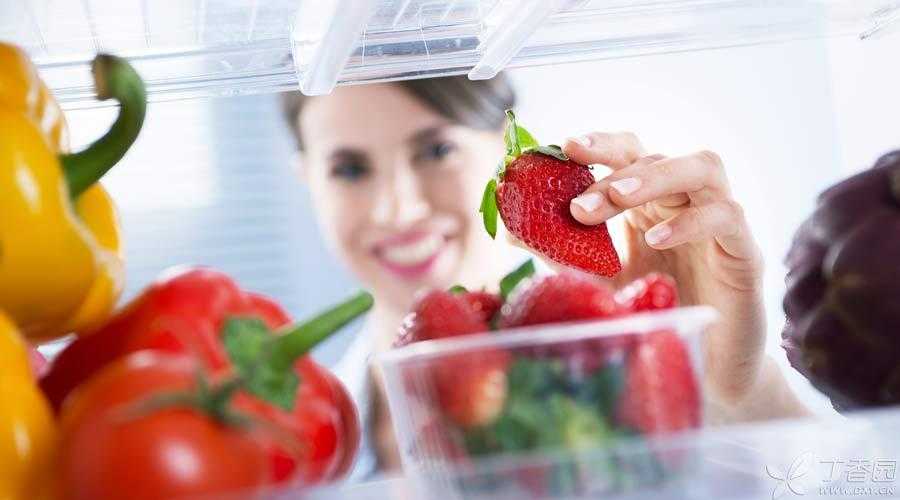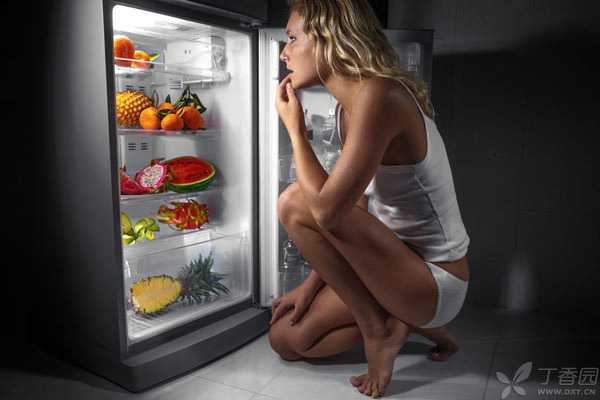
Every family has a refrigerator. Open your refrigerator. The refrigerator compartment is usually full. Leftovers, leftovers, all kinds of vegetables, melons and fruits, milk, eggs, cooked meat, drinks, chocolate, ketchup, cans, tea, even cosmetics, beauty products, health products and medicinal materials.
How to use the refrigerator compartment? Is it true that we can only plug wherever we are free?
Why do we need refrigeration?
Before freezing, as long as the temperature is lowered, the reproduction speed of microorganisms can be reduced. The temperature at which microorganisms are most likely to reproduce is usually between 20 ℃ and 37 ℃, while around 0 ℃, microorganisms usually stop or slow down the reproduction speed.
Cooling will also slow down the movement of molecules, It is not easy to collide with each other and react. Many reactions that make food bad and lose nutrients will also slow down as the temperature drops. For example, although canned meat can be preserved at room temperature for 2 years, research has found that after 2 years of storage in a refrigerator, the loss of vitamin B1 will be reduced by more than half compared with storage at room temperature.
These should be put in the refrigerator.
1. Store foods that are easy to reproduce microorganisms at normal temperature.
Leftovers, pasteurized milk, and all kinds of cooked meat and bean products without sterilized packaging are the favorites of bacteria, so they must be kept in the refrigerator.
Yogurt and cheese should also be put in the refrigerator, because beneficial bacteria such as lactic acid bacteria stop multiplying under cold storage conditions, while excessive activity at high temperatures produces too much acid, which will lead to a large number of deaths.
Seasonings such as ketchup, mustard sauce and sand tea sauce after opening should be put into the refrigerator, because although they have been sterilized or sterilized before opening, once they are opened, they will be contaminated by bacteria if they come into contact with the air again.
2. Fruits and vegetables
For many fruits and vegetables and other foods, cooling storage can delay the aging process of plant tissues.
For example, as long as apples are stored in cold storage, the carbon dioxide content is increased, the oxygen content is reduced, the water content is controlled, and ethylene, a ripening agent naturally produced by plants, is removed, they can safely [sleep] for several months or even a year, sweet, crisp and fresh as before.
Therefore, most vegetables and northern fruits are suitable for storage in the refrigerator.
Step 3: Eggs
Refrigeration is not allowed for 2 weeks, but refrigeration is recommended if it needs to be stored for more than 2 weeks.
Step 4: Beverages
Unopened drinks do not need to be refrigerated for a long time, as long as they are kept in the refrigerator two hours before drinking. The same is true for unopened pure fruit juice and various beverages. If you cannot drink them all at once, you must put them in the refrigerator and drink them within 24 hours.
5. Processed foods
Read carefully the instructions on the package and never judge by experience alone.
A friend bought a bag of bean products, which he thought could be put at room temperature in vacuum packaging, but it broke down in less than two days. He took a picture [the quality of this kind of food is really unbearable], glanced at the packaging bag in anger, only to find that it said [the shelf life below 10 ℃ is 30 days]. This tragedy has happened in many families…
6. Dried fish, shrimps, sea rice, sesame paste, etc.
Sesame paste placed in the refrigerator can delay the occurrence of oxidation reaction and avoid the generation of [hala flavor]. Dried fish, shrimps, sea rice, etc. placed in the refrigerator can avoid pungent smell and reduce the synthesis of carcinogens nitrosamines.
Refrigerating compartment is not suitable
1. Chocolate
Refrigeration for a day or two is no problem, but if refrigerated for a long time, white frost will precipitate on the surface and the texture will become rough. This is due to changes in the crystal morphology of cocoa butter. Although there are no nutrition and safety problems, the enjoyment when eating is far from good.
2. Few fruits and vegetables
Such as sweet potatoes, bananas, mangoes and durian. They will suffer frostbite at cold storage temperature and quickly turn black and rotten.

Raw and cooked separately and stored in different categories.
The so-called separation of raw and cooked products and classified storage are to avoid cross-contamination and mutual odor.
Generally speaking, cooked food and directly imported food should be placed on the upper two layers, such as leftovers, yogurt, milk, cooked food, etc. Raw food should be placed on the lower two layers, such as raw vegetables and tofu.
All leftovers should be added with plastic wrap or placed in a covered fresh-keeping box. Square fresh-keeping boxes are most recommended, because this can make the most effective use of the volume in the refrigerator. When there are many leftovers during the New Year and holidays, they can also be stored separately.
It is also better to pack all raw food separately. For example, each vegetable is covered with a plastic bag. Give the vegetable bag two layers of toilet paper and then put it into the plastic bag, which can adjust the humidity in the bag under the condition of tying the upper mouth, avoid drying and rotting, and prolong the shelf life of the vegetables.
Temperature partition
The temperature in different positions of the refrigerator is different, and the best place to store all kinds of food is also different. Generally speaking, it is colder under the refrigerator than above. The place deep inside is colder than the place near the door.
- Fear of frozen foods such as vegetables and fruits should not be placed too close to the inner wall to avoid frostbite. Bean products, milk and leftovers that are not afraid of freezing can be pushed to the inside. The part that opens the door outside has the highest temperature and is suitable for putting some food that can be temporarily stored at room temperature and is not so easy to break, or food to be eaten immediately, such as eggs, cheese, beverages after opening, condiments after opening, etc. Fresh meat, fish, shrimp and the like are the most easily damaged when they are not frozen, so they are best placed in a zero-degree refrigeration preservation box. If the refrigerator does not have the function of zero-degree refrigeration, they are placed in a sealed preservation box and placed at the bottom of the refrigerator compartment.
The refrigerator is not a safe
Even if placed in the refrigerator, green leafy vegetables can only be stored for about 3 days, and other vegetables are best eaten within a week to avoid a decline in nutritional value.
At the same time, the refrigerator also has limitations, it cannot solve the problem of mold reproduction, bread steamed bread and the like in the refrigerator still grow mold. At the same time, there are many cold-resistant pathogenic bacteria are not afraid of refrigerator temperature, especially fish and shrimp and other aquatic products. Therefore, after the leftovers are taken out of the refrigerator, they must be thoroughly heated to kill microorganisms.
Responsible Editor: Fu Ting
Clove Garden is exclusively authorized and cannot be reproduced without permission.
